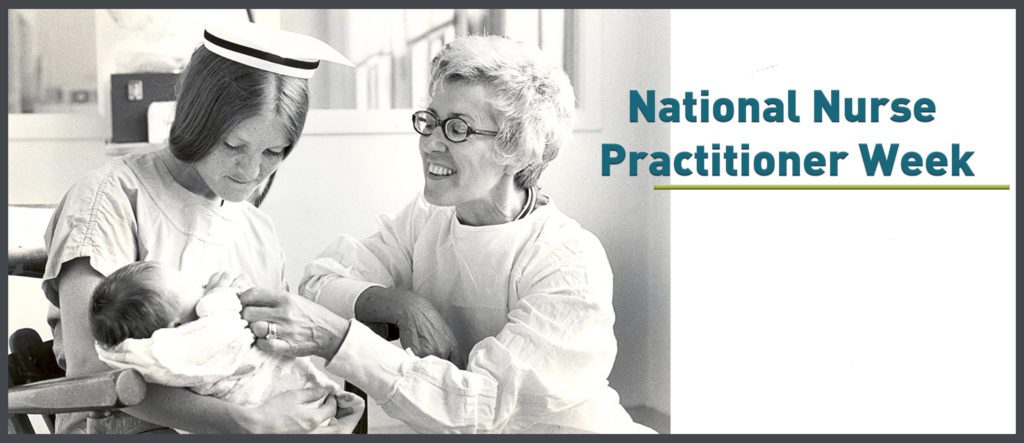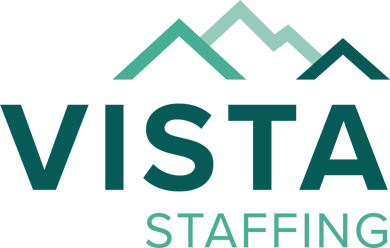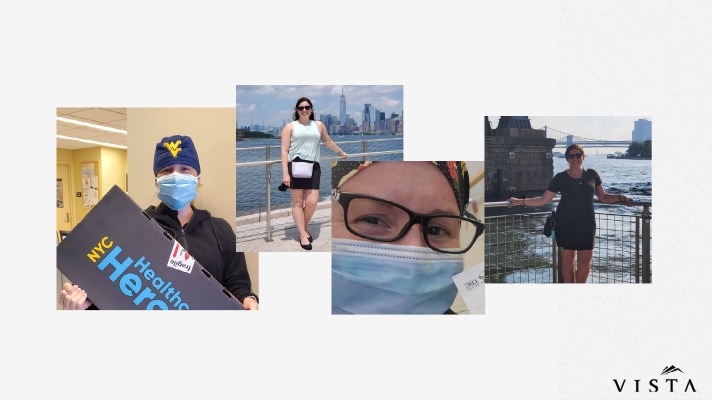NP Week 2020: Looking Back (and Ahead) at NPs’ Critical Role

Wishing nurse practitioners across the country a happy NP Week! We appreciate your skillful expertise, comprehensive approach to health, and all you do to expand patient-centered, high-quality care for the millions who need it.
Let’s say thanks and get to know why nurse practitioners are so crucial to our individual, family, and community health. Here’s a snapshot of why we acknowledge and honor NPs this week:
A History of Stepping Up…
When the boom of specialization created a shortage in PCPs in the late 1950s and ’60s, Registered Nurses stepped in to help underserved children and families, especially in rural areas that were hit hardest by the shortage. When the development of Medicare and Medicaid programs expanded health care access to low-income children, women, the elderly, and people with disabilities, nurses again stepped in to care for families and educate them about health promotion and disease prevention.
… And Proving Their Legitimacy
When the nurse practitioner profession got its official start with Loretta Ford and Henry Silver’s first training program at the University of Colorado in 1965, some worried that the title of “nurse practitioner” would be misleading. Health care professionals expressed concern that NPs were not qualified to deliver care without direct supervision. Through the late ’80s, it was difficult to use the services of NPs because they were not viewed as autonomous providers, meaning their services had no designated monetary value and were not directly reimbursable.
During the 1970s and beyond, NPs took action to prove their legitimacy by creating criteria and standards of practice and documenting patient satisfaction and increases in primary care availability nationwide. The American Nurses Association created the Council of Primary Care Nurse Practitioners in 1974, and five years later, there were approximately 15,000 NPs across the country. The National Council of State Boards of Nursing set licensure as a Registered Nurse as the standard for pursuing an advanced degree in nursing. Shortly after 1985, the American Academy of Nurse Practitioners was established.
Nurse leaders throughout the country worked with members of Congress and lobbyists to achieve reimbursement and provider status. The Omnibus Reconciliation Act of 1989 created limited reimbursement for NPs, and later, the Balanced Budget Act of 1997 gave nurse practitioners a direct refund.
Meeting a Growing Demand
Since its beginnings in the 1960s, the nurse practitioner profession has flourished into one of our country’s healthcare system’s most vital roles. There are 290,000 nurse practitioners and counting in the United States.
For medically underserved families and communities, nurse practitioners mean more accessible, less expensive care. But more patients could make use of the quality, affordable services they provide. While NPs are licensed and can prescribe medication and other treatments in all 50 states and the District of Columbia, only 22 states and D.C. have granted full practice authority to NPs so far.
Thank You, NPs Everywhere!
Nurse Practitioner Week 2020 is coming to a close, but it’s never too late to say thanks. Share your appreciation for nurse practitioners-and keep the conversation going about the critical role they play in advancing our healthcare system.









